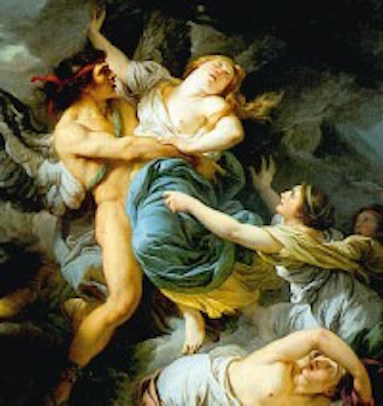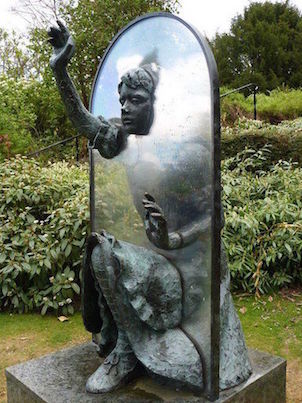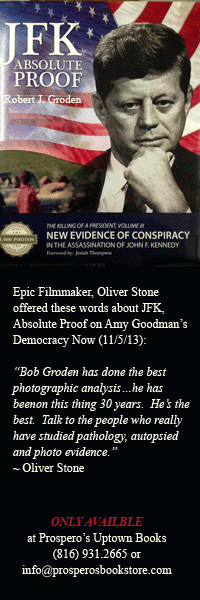 The foregoing was the title of a non-sense poem for children by Lewis Carroll, the 19th century Englishman who also wrote Alice In Wonderland and Through The Looking Glass…
The foregoing was the title of a non-sense poem for children by Lewis Carroll, the 19th century Englishman who also wrote Alice In Wonderland and Through The Looking Glass…
My grandfather was active in a fraternal group for the lumber business called “The Royal Order of The Hoo-Hoos”. Its titular head was called “Grand Snark of The Universe.”.Although the meaning of the word “snark” has changed in the last century, from “silly” to “snide”, or “cutting”, Carroll’s title still has a nice ring to it.
If it’s snark you want (in the latter day sense) you need go no further than the critic Daniel Mendelsohn, who writes for The New Yorker. I came across this toxic muse when checking the reviews of a book I very much enjoyed, “The Parthenon Enigma” by Joan Connelly. Connelly is a professor of Archaeology at New York University.
In her new book, Connelly makes a persuasive case for a new explanation of one of the salient features of the ancient building. 9-11 got Connelly thinking about the striking parallels between that event and the disaster that happened to Athens in the fifth century B.C., when the city fell to the Persians and was destroyed by the invaders. Connelly wrote an essay published in the Wall Street Journal in 2002 about the points of resemblance between the two national calamities and how both nations could come back from the tragedies by rebuilding and by reaffirming their national identity with a fitting memorial.
The events of 9-11 also caused the author to revisit the conclusions she’d reached in a scholarly article she’d written five years before.
 In 1996 she published “Parthenon and Parthenoi: A Mythological Interpretation of the Parthenon Frieze” in the American Journal of Archaeology. In that article, Connelly had suggested that the interior frieze of the temple reflects not just an anodyne civic procession (think the Rose Bowl Parade combined with a Presidential Inaugural). She believes instead that it shows something much more fundamental, atavistic and primitive even to our modern eyes.
In 1996 she published “Parthenon and Parthenoi: A Mythological Interpretation of the Parthenon Frieze” in the American Journal of Archaeology. In that article, Connelly had suggested that the interior frieze of the temple reflects not just an anodyne civic procession (think the Rose Bowl Parade combined with a Presidential Inaugural). She believes instead that it shows something much more fundamental, atavistic and primitive even to our modern eyes.
 Connelly pulls together a wealth of research and analysis to put forward a persuasive argument that what is being depicted is no less than the original foundation myth of the city itself, if not Greek civilization. The legendary first king of Athens, Erectheus, had three daughters. Connelly fits the story of their sacrifice to save the city from attackers to the salient event of the fifth century. She says that the frieze, with its statuary, and the building itself, with its architectural elements, speak to the democratic ideal of self-sacrifice for a greater good. This was a powerful message after the brutal attacks of the Persian Empire on Athens made clear the cost of freedom. It’s an equally compelling message after the War on Terror, which has been waged throughout the world for the last fifteen plus years.(Why else did ‘American Sniper’shatter all box office records the last two weeks ?)
Connelly pulls together a wealth of research and analysis to put forward a persuasive argument that what is being depicted is no less than the original foundation myth of the city itself, if not Greek civilization. The legendary first king of Athens, Erectheus, had three daughters. Connelly fits the story of their sacrifice to save the city from attackers to the salient event of the fifth century. She says that the frieze, with its statuary, and the building itself, with its architectural elements, speak to the democratic ideal of self-sacrifice for a greater good. This was a powerful message after the brutal attacks of the Persian Empire on Athens made clear the cost of freedom. It’s an equally compelling message after the War on Terror, which has been waged throughout the world for the last fifteen plus years.(Why else did ‘American Sniper’shatter all box office records the last two weeks ?)
Most of the reaction to the book (subtitled “A New Understanding of the West’s Most Iconic Building and the People Who Made It”) has been positive. The New York Times published a review by Caroline Alexander, which called Connelly’s book: “the exposition of a truly great idea”, “exciting and revelatory history”, and “a reminder of what a thrilling subject the past, that foreign country, can be.” The NYT review notes; “Her book serves as a bracing reminder that first rate scholarship not only takes no visible fact for granted but also digs deep into the unknown unknowns.”
There are equally respectful assessments in the Washington Post, The Financial Times, and a host of other publications. Going on line to the various rating sites for recent books, shows that the vast majority of readers, both lay and academic, give the book high marks. It made several lists of the most important books published in 2014.
Then we have Daniel Mendelsohn…
I came across his review of The Parthenon Enigma in The New Yorker issue of April 14th. The first thing that struck me is how shamelessly he riffs off the Persian Invasion/9-11 analogy Connelly first made almost 12 years earlier in an opinion piece in the Wall Street Journal. No credit is given the author he is reviewing for recognizing the historical parallels. Fully a fourth of his piece is dedicated to this metaphor, all without attribution to the author who first used it, whose book he then proceeds to trash.
Mendelsohn only addresses the subject of the book he is purportedly reviewing some two thirds of the way through his article. He gives us all sorts of historical background on the Parthenon, which is useful certainly, but makes his taunt that Connelly “generously padded her book” a little churlish.
While Mendelsohn concedes that the traditional explanation of the frieze (that it’s a depiction of the benign quadrennial civic parade known as the Panathenaea) has some serious shortcomings, he is not willing to give credence to Connelly’s findings.
In fact, in the 20 percent of the review that actually addresses her findings, the dominant tone is one of the derision, with a sub-text of patronizing condescension.
All Connelly’s carefully marshalled evidence (400 plus pages of texts, photographs, footnotes and bibliography) is to no avail. Mendelsohn says her rebuttals to those who take issue with her theories are “oddly unpersuasive.” (Does he mean they should be persuasive but for some “odd”-i.e. undefined-reason they’re not?)
 Worse yet, Connelly’s book has “the manic quality you associate with conspiracy theory.”
Worse yet, Connelly’s book has “the manic quality you associate with conspiracy theory.”
Apparently a willingness to examine all available evidence, no matter how fragmentary, is a sign of mental instability. Mendelsohn apparently forgot his own prior caveat that absent a contemporary account from the time the Parthenon was built, we will never know for certain what subjects were represented by its art work, a qualification that would seem to leave some room for informed scholarly conjecture.
Worse yet, Mendelsohn compounds his tone of derision by turning all Connelly’s virtues into vices. (Literally! He says of her book: “This one has the defects of its virtues”, whatever that means.) Her excitement in discovering an inscription on an ancient papyrus (in a mummy’s shroud) that helped her formulate her theory is chalked up to emotional immaturity. Providing a historic context for the book’s theme is “sneakily tendentious.” Even if this is justified as “infectious enthusiasm,” it cannot, Mendelsohn contends, “compensate for questionable methods and wobbly evidence.”
In closing, Mendelsohn says that; “If Connelly’s idea is far-fetched, her fixation is, at least to me, wholly forgivable.”
He then relates how as an adolescent he spent much time laboring over scale models of the Parthenon and the statue of Athena it contained. Gee, I bet Professor Connelly, a MacArthur “Genius” Award winner and a fellow of All Souls College at Oxford, felt a lot better about her life’s work being dismissed as intellectually shoddy by having it likened to a teenage fad the reviewer himself was prey to.
A lot of it is petty academic jealousy. I see that Mendelsohn has degrees from Princeton in Classics but I don’t see that he ever taught anywhere. When I served on the Classics Department Graduate Council there in the late 90’s, some of the faculty, who no doubt taught Mendelsohn when he was getting his master’s and doctorate, would make sly little digs about Connelly’s theory right after she came out with it. It reminds me of a very funny account by a music professor at the University of California at Santa Barbara about two old time scholars who published articles about the origin of Gregorian chants. Both put forward identical theories, each, of course, accused the other of plagiarism and it practically came to a duel. Subsequent discoveries, naturally, proved that they were both totally wrong on the facts.
Critic Mendelsohn should take the long view.
The broader point of Professor Connelly’s book is not as a sensational revelation of human sacrifice, as he pretends. It is that a tale of human sacrifice from an ancient time can be a parable of both filial piety and civic virtue. Think Abraham and Isaac in the Old Testament. That more measured analysis is not for those who are more intent on “The Hunting of The Snark”, like Critic Mendelsohn.












Just ordered off of Amazon, should be here tomorrow. “first rate scholarship not only takes no visible fact for granted but also digs deep into the unknown unknowns.”” This is the difference between good schools and great schools. ““Learning how to think” really means learning how to exercise some control over how and what you think. It means being conscious and aware enough to choose what you pay attention to and to choose how you construct meaning from experience. Because if you cannot or will not exercise this kind of choice in adult life, you will be totally hosed.”
Very interesting and informative, including the snark.
This is a great read for an old man in precipitous decline. Stimulating. 🙂
My faculties are mostly stove up these days in my dotage and this was a salubrious and multifaceted remedy.
http://www.livescience.com/17780-mental-sharpness-declines-middle-age.html
“Researchers found that over the 10-year study, there was a 3.6 percent decline in mental reasoning scores in people who were between the ages of 45 and 49 at the study’s start. There was a 9.6 percent decline in the abilities of men ages 65 to 70 years at the start, and a slightly smaller, 7.4 percent decline, in women of those ages.”
I think a bought myself an extra couple of weeks just with this read!
:>)
Chuck, please refrain from posting depressing studies like these. My mind, the terrible master, doesn’t like to be reminded he is slipping!!!!
I know…
Having missed the book and its critic, I can only addres the situation, much like dialogue in Up the Down Staircase, where in a book report on the book, Cleopatra on the Nile, the author refers to the actions of the characters, Richard Burton and Elizabeth Taylor. We had much the same education, with a high school history/civics teacher, ahead of his time, refering to our forefathers as pocket book patriots. We accepted that finding, at the time, being avant guard thinking, something that must be true. In fact many died broke and penniless, not very successful for patriots that chose their position on the basis of profit. There are always critics that, based on marketing their tripe, are willing to take a contrarian view, knowing there are some in the general public who will heap them with accolades. Like you, I tend to research for myself, discounting the critics, and how they feel.
Thank you for your thoughtful comment.Sometimes “revisionist history”is a healthy palliative to conventional wisdom,sometimes it’s ideological axe-grinding,and,yes,sometimes it’s just sensationalism for its own sake.(Think of all the nonsense put out over the centuries about “who Shakespeare really was”.)Regardless of which side you come down on in this particular debate,however,given the centrality of Athenian history and culture to our understanding of democracy,it is clearly worth having.